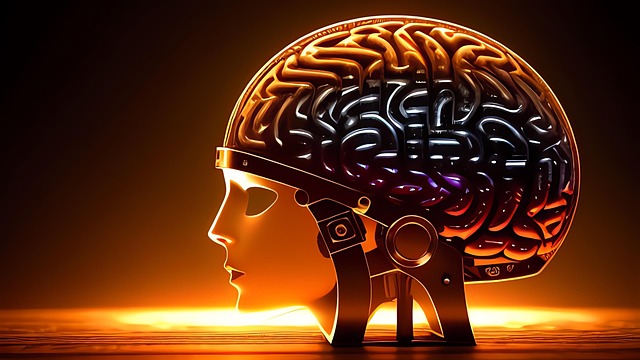AI chatbots are transforming customer service with instant, personalized 24/7 support powered by natural language processing (NLP). They handle tasks from FAQs to complex issue resolution, continually learning from user interactions. Rule-based and machine learning (ML) chatbots offer distinct capabilities; rule-based excel at simple queries, while ML chatbots provide more nuanced conversations. Training and optimizing AI chatbots with diverse data and regular updates is crucial for improved accuracy and user engagement. This technology drives cost savings, enhances operations, and boosts customer satisfaction by offering round-the-clock support and standardized information.
“Discover the transformative power of AI chatbots in revolutionizing customer service. This comprehensive guide explores the fundamentals and advanced applications of these intelligent tools, offering a deep dive into their functionality and potential. From understanding the basics to optimizing performance, we uncover how live chat chatbots enhance user experiences and drive business success. Learn about different chatbot types, their benefits, and essential training strategies for creating engaging, effective AI-driven conversational interfaces.”
- Understanding AI Chatbots: The Basics and Their Functionality
- Benefits of Implementing Live Chat Chatbots in Customer Service
- Types of AI Chatbots and Their Applications
- Training and Optimizing Your Live Chat Bot for Better User Engagement
Understanding AI Chatbots: The Basics and Their Functionality

AI chatbots have revolutionized customer service, offering instant and personalized support 24/7. These virtual assistants utilize natural language processing (NLP) to understand user queries and generate human-like responses. They can handle a wide range of tasks, from answering frequently asked questions to assisting with complex issues, all while learning and adapting based on each interaction.
At their core, AI chatbots function by following predefined rules and algorithms, coupled with machine learning capabilities. They process user inputs, identify intent, and retrieve relevant information from a database or knowledge base to deliver accurate and contextually appropriate responses. This technology ensures efficient customer engagement, cost reduction, and improved business operations.
Benefits of Implementing Live Chat Chatbots in Customer Service

Implementing live chat chatbots powered by AI offers significant advantages for customer service operations. One of the key benefits is enhanced accessibility, as these chatbots are available 24/7, ensuring customers can receive instant support whenever they need it. This immediate response time improves customer satisfaction and reduces wait times, allowing agents to handle more complex queries.
Additionally, live chat chatbots can manage a high volume of basic customer inquiries efficiently, freeing up human agents to focus on more intricate issues that require empathy and critical thinking. AI chatbots also provide consistent and accurate information, ensuring every customer interaction is of a high standard. This standardization reduces the risk of human error and enhances the overall customer experience.
Types of AI Chatbots and Their Applications

AI chatbots have evolved significantly, offering diverse types tailored for specific applications. The two primary categories are rule-based and machine learning (ML) chatbots. Rule-based AI chatbots operate on predefined rules and templates, making them suitable for handling simple, structured queries. They are often used in customer service for frequently asked questions (FAQs), providing quick responses to common issues. ML chatbots, on the other hand, leverage natural language processing (NLP) to understand and generate human-like text, enabling them to handle more complex conversations. These advanced chatbots can learn from user interactions, adapt to new information, and provide personalized assistance in various domains like healthcare, e-commerce, and financial services.
Within these categories, sub-types exist, such as chat bots powered by deep learning algorithms for enhanced NLP capabilities or those integrating with enterprise systems for seamless data access. The choice between rule-based and ML chatbots depends on factors like the complexity of queries, desired personalization, and available resources. Regardless of type, AI chatbots are transforming customer engagement by offering instant support, 24/7 availability, and scalable solutions that improve user experiences while reducing operational costs.
Training and Optimizing Your Live Chat Bot for Better User Engagement

Training and optimizing your live chat bot is essential for enhancing user engagement and ensuring it delivers a seamless experience. These AI chatbots learn from interactions, so providing diverse and representative training data is crucial. This involves feeding them a wide range of potential customer queries and responses, covering various scenarios and languages if applicable. The more comprehensive the training, the better the bot can understand and respond to user needs.
Regular updates and adjustments are also vital. Analyze chat logs to identify common issues or areas where the bot struggles. Fine-tune its algorithms based on this data, improving accuracy and reducing errors. Additionally, consider incorporating machine learning techniques to allow the chatbot to adapt and evolve over time, ensuring it stays relevant and effective in a dynamic user environment.
Live chat chatbots powered by AI are transforming customer service, offering 24/7 availability, instant responses, and personalized interactions. By understanding their capabilities, leveraging their benefits, and optimizing training, businesses can enhance user engagement and drive better customer outcomes in today’s digital landscape. AI chatbots continue to evolve, promising an even more seamless future for customer-business interactions.
